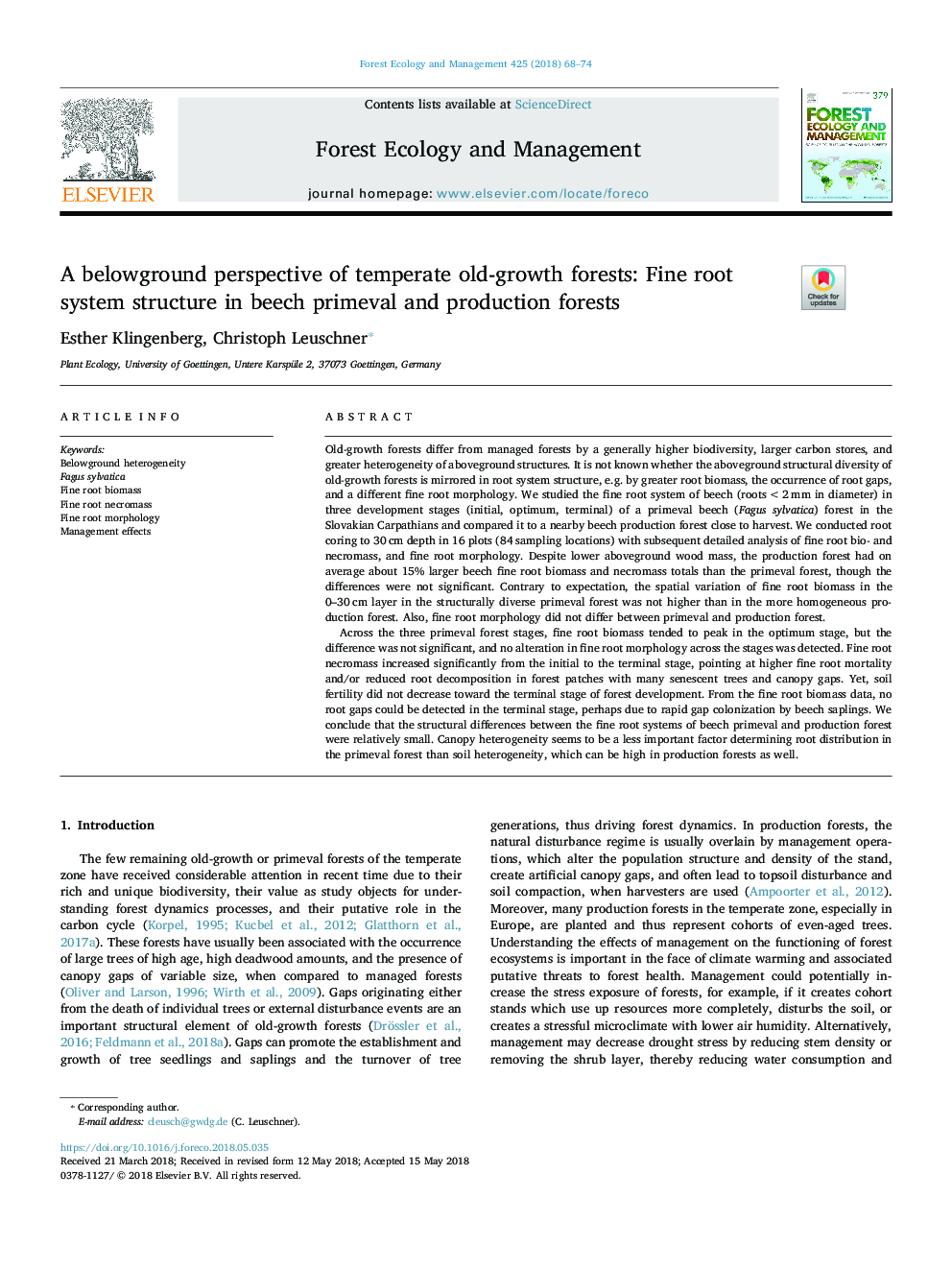| Article ID | Journal | Published Year | Pages | File Type |
|---|---|---|---|---|
| 6541563 | Forest Ecology and Management | 2018 | 7 Pages |
Abstract
Across the three primeval forest stages, fine root biomass tended to peak in the optimum stage, but the difference was not significant, and no alteration in fine root morphology across the stages was detected. Fine root necromass increased significantly from the initial to the terminal stage, pointing at higher fine root mortality and/or reduced root decomposition in forest patches with many senescent trees and canopy gaps. Yet, soil fertility did not decrease toward the terminal stage of forest development. From the fine root biomass data, no root gaps could be detected in the terminal stage, perhaps due to rapid gap colonization by beech saplings. We conclude that the structural differences between the fine root systems of beech primeval and production forest were relatively small. Canopy heterogeneity seems to be a less important factor determining root distribution in the primeval forest than soil heterogeneity, which can be high in production forests as well.
Related Topics
Life Sciences
Agricultural and Biological Sciences
Ecology, Evolution, Behavior and Systematics
Authors
Esther Klingenberg, Christoph Leuschner,
